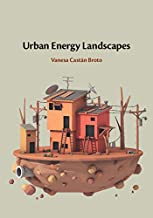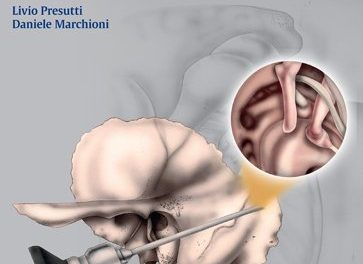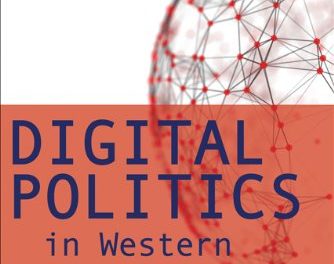 Author: Vanesa Castan Broto
Author: Vanesa Castan Broto
Publisher: Cambridge University Press – 242 pages
Book Review by: Sonu Chandiram
A radical re-examination, then a re-design of the way urban living spaces are organized around their energy sources, is required, if we are to deliver sustainable energy to all in the future, writes the author of this book, Vanesa Castan Broto. This book undertakes the re-examination in its 10 chapters that we list below:
- Introduction
- Part I – Understanding Urban Energy Landscapes
- Energy Transitions and Urban Infrastructure
- Urban Energy Landscapes as Connective Tissue
- Change and Agency in Landscapes of Dwelling
- Part II – Heterogeneous Urban Energy Landscapes
- Modernity Promises and the Quest for Autonomy
- Urban Energy Landscapes in Maputo, Mozambique
- Contiguous Heterogeneity and Private Strategies for Energy Provision: Urban Energy Landscapes in Bangalore, India
- When Equal Access to Energy Causes Injustice: Urban Energy Landscapes in Hong Kong, People’s Republic of China
- Industrial Legacy and Governance Through Activism: Urban Energy Landscapes in Concepcion, Chile
- Part III – Change and Transformation in Urban Energy Landscapes
- Exploring Connective Tissues through Walking Different Urban Energy Landscapes
- Imagining Urban Energy Futures
The author takes close looks at four urban landscapes: one in Africa, two in Asia, and one in Latin America (chapters 5,6,7,8).
After looking at different areas of Maputo, she writes: “Urban landscapes in Maputo, Mozambique express the collision between social change aspirations and the realities of urban life…FRELIMO (the political organization that freed this country from French colonialists and has ruled it since 1975) rejected the city as the center of the colonial system; they viewed the city as a location of corruption and exploitation.”
After liberation, she points out that there was a ‘struggle’ to free the city from being a place where influential leaders continued to exploit the unfortunate and enrich themselves. “Transforming Maputo into a clean, revolutionary city was central to that enterprise,” the author asserts.
Meanwhile in Bangalore, India, the author puts people of different socioeconomic levels in stark contrast against each other – the so-called haves and have-nots. She points out that the first streetlight in Bangalore was lit in 1905, prior to which gas lamps were the predominant form of lighting in that city.
“Electrification (providing electricity to city residents) was a tool deliberately deployed to essay modernity in Bangalore, while fuel provision is most often thought of as a secondary problem. Fuels (such as gas and kerosene) however, also shape the experience of the built environment and the possibilities for households to secure energy services. The result is a landscape of fragmentation – that is, fragmentation of sources of energy, of energy practices, and of governance structures.”
In Bangalore, in sum, “there are abysmal differences between large consumers of electricity and those who have intermittent access, or no access at all to the network, the author writes.
In stark contrast, Hong Kong at night conjures up images of a dynamic metropolis with thousands of lights spread within the skyscrapers. But the title of the chapter pertaining to Hong Kong makes us wonder what constitutes ‘injustice’ and spurs us on to read it: When Equal Access to Energy Causes Injustice
The author begins this chapter by discussing the 1973 comedy The House of 72 Tenants: “We discover a squalid and overcrowded tenement community in Hong Kong where life is made harder by a cruel landlady, Pak Ku, and her sleazy husband Bing. Pak Ku torments her tenants through substandard provision of water and electricity.”
Finally, the author discusses the energy situation of the city of Concepcion, Chile.
“The Chilean poet Alfonso Alcalde (1921-92) chronicled the transformation of the city of Concepcion through its political struggles.” There was rapid industrialization and development here of the energy sector in the 1960s. In his writings, he discussed the numerous struggles of this city, including the decline of coal, political repression of the coalmines, and the exploitation of the Bio Bio River for the benefit of privileged people.
Alcalde wrote about the development of the two-speed city of Gran Concepcion, described by the author as “the industrial city of the engineer, the technician, and the bureaucrat – and the marginal urban spaces in which small scale, traditional businesses survive.”
This poet was a critic of the (unnamed) engineer who designed Gran Concepcion, charging him with apparent subordination of people belonging to a different caste, class, race, etc.
The author writes: “Alcalde celebrated the daily life in the city of Concepcion from the perspective of the dispossessed: the food and celebrations, the drunkards and the prostitutes, the trials of hard work of the miners and the fishermen, and the embrace of lovers as a defiant gesture against death.”
In sum, the two cities – Concepcion, with a population of 229,665 in the 2012 Census, is the eleventh largest urban center in Chile, and Gran Concepcion, with 945,650 inhabitants, coexist. They are described in a Wikipedia article this way:
Concepcion is a city in central Chile, at the core of the commune and metropolitan area of Gran Concepción, the country’s second largest urban conurbation. It has a significant impact on domestic trade, being part of the most heavily industrialized region in the country.
The author writes that Concepcion and Gran Conception coexist in this way:
“The spatial manifestation of the land in Gran Concepcion at first might appear fragmented, but it is actually divided neatly between two spaces whose economic flows operate with different rhythms. One economic space, shaped by industrial interests oriented toward the insertion of local economic processes into the global economy, follows development strategies that emphasize the national strategic importance of Gran Concepcion and the region of Bio Bio.
The other economic space, less consolidated around a single set of interests, reflects the perspectives of those who livelihoods depend upon place-based operations. This second economic space relates to the subaltern perspectives of those who have been systematically excluded from Concepcion’s history of industrial development. The result is the structuration of the energy landscape around high-energy-consuming industrial production centers, surrounded by the inherited fabric of the city. The coexistence of landscapes with radically different vocations translates into the high visibility of social conflicts surrounding energy issues.
Author:
Vanesa Castan Broto is an inter-disciplinary researcher studying climate change governance and urban transitions. In 2016, she was awarded the Philip Leverhulme Prize for contributions to geography. In 2013, her project on Participatory Planning for Climate Change in Mozambique was recognized as a Lighthouse Activity for the Urban Poor by the United Nations Framework Convention on Climate Change.
Castan Broto’s recent books include An Urban Politics of Climate Change (with G. Edwards and H. Bulkeley, 2014) and Urban Sustainability Transitions (with N. Frantzeskaki, L. Coenen, and D. Loorbach, 2017). She was a lead chapter author for UN-Habitat’s World Cities Report 2016.






